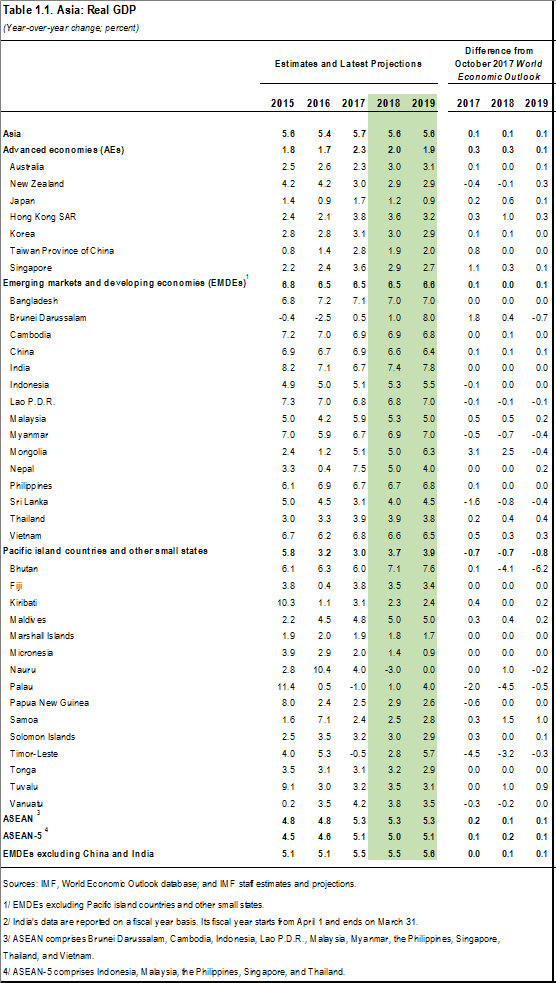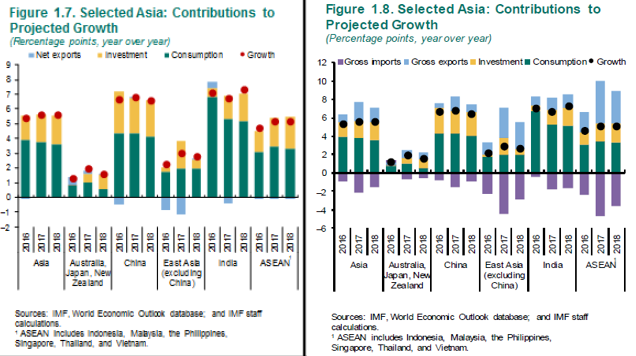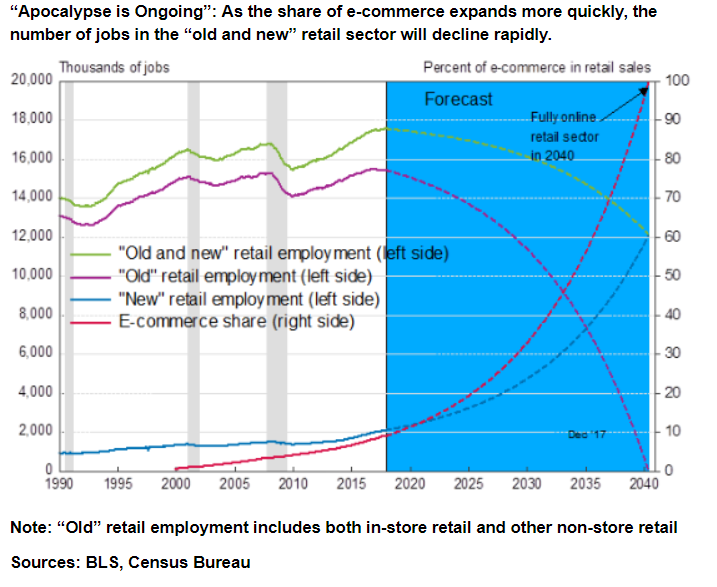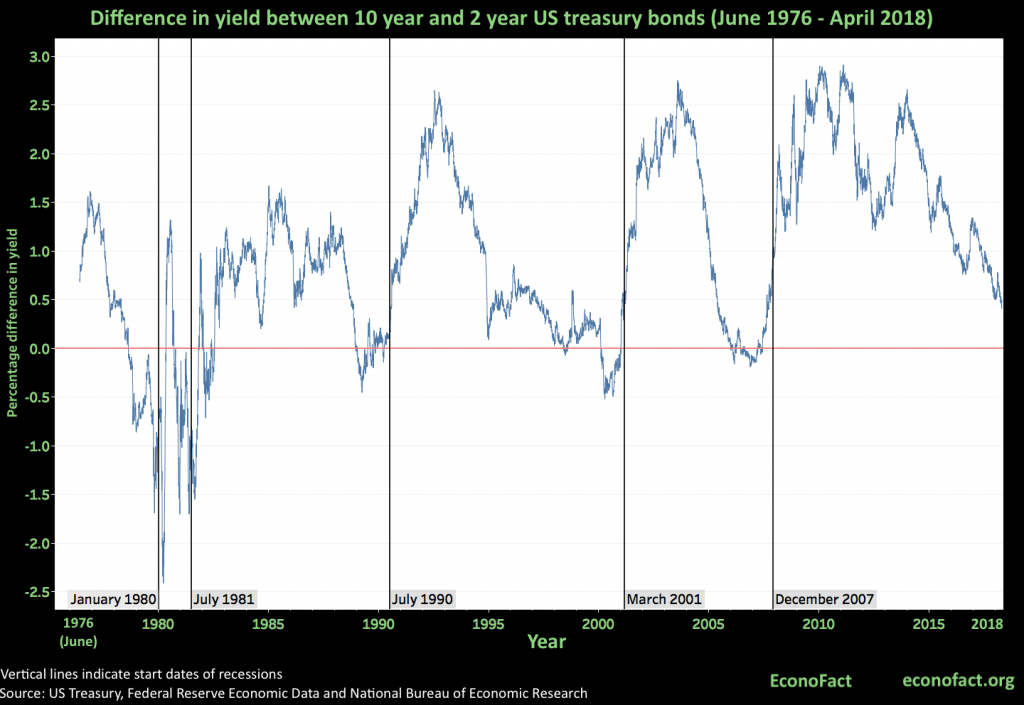Showing posts with label Forecasting Forum. Show all posts
Thursday, May 10, 2018
Macroeconomic Forecasting in Germany has changed after the Great Recession?
From a new paper by Jörg Döpke, Ulrich Fritsche, and Karsten Müller:
“Based on a panel of annual data for 17 growth and inflation forecasts from 14 institutions for Germany, we analyse forecast accuracy for the periods before and after the Great Recession, including measures of directional change accuracy based on Receiver Operating Curves (ROC). We find only small differences on forecast accuracy between both time periods. We test whether the conditions for forecast rationality hold in both time periods. We document an increased crosssection variance of forecasts and a changed correlation between inflation and growth forecast errors after the crisis, which might hint to a changed forecaster behaviour. This is also supported by estimated loss functions before and after the crisis, which suggest a stronger incentive to avoid overestimations (growth) and underestimations (inflation) after the crisis. Estimating loss functions for a 10—year rolling window also reveal shifts in the level and direction of loss asymmetry and strengthens the impression of a changed forecaster behaviour after the Great Recession.”
From a new paper by Jörg Döpke, Ulrich Fritsche, and Karsten Müller:
“Based on a panel of annual data for 17 growth and inflation forecasts from 14 institutions for Germany, we analyse forecast accuracy for the periods before and after the Great Recession, including measures of directional change accuracy based on Receiver Operating Curves (ROC). We find only small differences on forecast accuracy between both time periods. We test whether the conditions for forecast rationality hold in both time periods.
Posted by at 10:43 AM
Labels: Forecasting Forum
Wednesday, May 9, 2018
GDP Growth Rate Projection in Asia Pacific
The new IMF Regional Economic Outlook for Asia Pacific says that “Growth in Asian economies has picked up in line with global developments. Asia grew by 5.7 percent in 2017, up 0.3 of a percent from the year before, with the pickup broad-based across the region (Table 1.1). Asia continues to be both the fastest-growing region in the world and the main engine of the world’s economy, contributing more than 60 percent of global growth (three-quarters of which comes from China and India) (Figure 1.6). Consumption and investment continue to be major contributors. The contribution of net exports remained small, but the strong growth of gross exports and imports suggests that the recovery in external demand (both inside and outside the region) was an important driver of GDP growth in Asia (Figures 1.7 and 1.8).”
The new IMF Regional Economic Outlook for Asia Pacific says that “Growth in Asian economies has picked up in line with global developments. Asia grew by 5.7 percent in 2017, up 0.3 of a percent from the year before, with the pickup broad-based across the region (Table 1.1). Asia continues to be both the fastest-growing region in the world and the main engine of the world’s economy, contributing more than 60 percent of global growth (three-quarters of which comes from China and India) (Figure 1.6).
Posted by at 3:46 PM
Labels: Forecasting Forum
Thursday, May 3, 2018
Retail Apocalypse Postponed Not Cancelled
A new post by Brian Schaitkin says that “Economist Michael Mandel of the Progressive Policy Institute tells a reassuring story about what will happen to retail employment. Jobs behind retail counters and stocking store aisles will simply be replaced by jobs at warehouses, e-commerce facilities, and as delivery drivers.” How quickly will this happen? He provides forecasts under the “Apocalypse is an Exaggeration” and “Apocalypse is Ongoing” scenarios:
“[…] Under an “Apocalypse is an Exaggeration” scenario, e-commerce will grow at a modest pace as a share of total retail sales because many of the lowest hanging e-commerce fruit have already been plucked. Therefore, the transformation from in-store retail to e-commerce would take quite a long time. The logistical challenge of shipping books to individual customers is orders of magnitude less complicated than delivering groceries. The “in-store” experience also provides special value to some consumers, especially when the ability to touch and feel merchandise and consult with experts is part of the value proposition stores and their workers provide. Firms will learn how to adapt to the challenge of e-commerce in less easily adapted industries, but because of these challenges, growth in the e-commerce share may increase by only 6.8 percent every 13 years, as happened between 2005 and 2017. Under this scenario, the share of e-commerce in retail sales would be 21 percent by the end of 2040, and the “old and new” retail sector will employ 16.8 million workers, compared to 17.6 million today. A disappointing job trajectory to be sure, but hardly apocalyptic.”
“The 2005 to 2017 period though lights the way to a bolder, yet in my view more likely “Apocalypse is Ongoing” scenario. This scenario assumes that exponential growth of the e-commerce share will continue as it did from 2005 to 2017 meaning that the e-commerce share of retail will double every 6.5 years. Incentives for firms to adapt new sectors to e-commerce will be tremendous due to the convenience and efficiency commerce without stores can provide. Companies can apply the lessons from developing one form of e-commerce to new product areas with knowledge of the pitfalls they are likely to encounter. Under this scenario, e-commerce would represent 18 percent of retail sales by the middle of 2024, 36 percent by the end of 2030, and 100 percent by the middle of 2040. Initially, job losses resulting from the shift to e-commerce would be small in “old and new” retail with 738,000 jobs disappearing between now and the end of 2025. By 2040, however, only 12.1 million workers, all employed by “new” retail sectors, would be able to manage all retail sales activities, a loss of 5.5 million jobs.”
Continue reading here.
A new post by Brian Schaitkin says that “Economist Michael Mandel of the Progressive Policy Institute tells a reassuring story about what will happen to retail employment. Jobs behind retail counters and stocking store aisles will simply be replaced by jobs at warehouses, e-commerce facilities, and as delivery drivers.” How quickly will this happen? He provides forecasts under the “Apocalypse is an Exaggeration” and “Apocalypse is Ongoing” scenarios:
“[…] Under an “Apocalypse is an Exaggeration” scenario,
Posted by at 10:13 AM
Labels: Forecasting Forum, Inclusive Growth
Monday, April 30, 2018
Forecasting Forum – April 2018
New Blogs:
Global Economy: Good News for Now but Trade Tensions a Threat – IMF Blog by Maurice Obstfeld
Econometrics, Machine Learning, and Big Data – No Hesitations (Frank Diebold’s Blog)
2018’s Growing and Shrinking Economies – Focus Economics
A brief history of time series forecasting competitions – Hyndsight (Rob Hyndman’s Blog)
IJF special issue on “Forecasting for Social Good” – IIF Blog
Ghysels and Marcellino on Time-Series Forecasting – No Hesitations (Frank Diebold’s Blog)
What impact would a trade war between the U.S. and China have on their economies? – Focus Economics
What Information Does the Yield Curve Yield? – ECONOFACT
New Articles:
Forecasting US GNP growth: The role of uncertainty – Mawuli Segnon, Rangan Gupta, Stelios Bekiros, and Mark E. Wohar, Journal of Forecasting
Are macroeconomic density forecasts informative? – Michael P. Clements, International Journal of Forecasting
The role of accounting fundamentals and other information in analyst forecast errors – Danilo Monte‐Mor, Fernando Galdi, and Cristiano Costa, Journal of International Finance
What do professional forecasters actually predict? – Didier Nibbering, Richard Paap, and Michel van der Wel, International Journal of Forecasting
How well do economists forecast recessions? – Zidong An, Joao Jalles, and Prakash Loungani, International Finance
Evaluating the use of realtime data in forecasting output levels and recessionary events in the USA – Chrystalleni Aristidou, Kevin Lee, and Kalvinder Shields, Journal of the Royal Statistical Society
New Blogs:
Global Economy: Good News for Now but Trade Tensions a Threat – IMF Blog by Maurice Obstfeld
Econometrics, Machine Learning, and Big Data – No Hesitations (Frank Diebold’s Blog)
2018’s Growing and Shrinking Economies – Focus Economics
A brief history of time series forecasting competitions – Hyndsight (Rob Hyndman’s Blog)
IJF special issue on “Forecasting for Social Good” – IIF Blog
Ghysels and Marcellino on Time-Series Forecasting – No Hesitations (Frank Diebold’s Blog)
Posted by at 9:51 AM
Labels: Forecasting Forum
Friday, April 27, 2018
What Information Does the Yield Curve Yield?
A new post by Michael W. Klein shares the concern about the possibility of an upcoming recession that “Forecasting the twists and turns of the economy is difficult. One set of indicators used to gauge where the economy is headed draws on information from financial markets since the yields paid by financial assets reflect the collective market view of the future state of the economy. An inverted yield curve — when interest rates on short-term Treasury bonds exceed those on longer-term Treasury bonds — has in the past proven to be a strong indicator of an oncoming recession. While the U.S. economy is not currently experiencing an inverted yield curve, the difference in yields between shorter- and longer-term Treasury bonds has narrowed. The movements in the yield curve, as well as in other financial market indicators, have raised concerns that the current long expansion of the United States economy may be coming to an end.”
Continue reading here. Also see my previous post on forecasting recessions.
A new post by Michael W. Klein shares the concern about the possibility of an upcoming recession that “Forecasting the twists and turns of the economy is difficult. One set of indicators used to gauge where the economy is headed draws on information from financial markets since the yields paid by financial assets reflect the collective market view of the future state of the economy. An inverted yield curve — when interest rates on short-term Treasury bonds exceed those on longer-term Treasury bonds — has in the past proven to be a strong indicator of an oncoming recession.
Posted by at 3:53 PM
Labels: Forecasting Forum
Subscribe to: Posts






